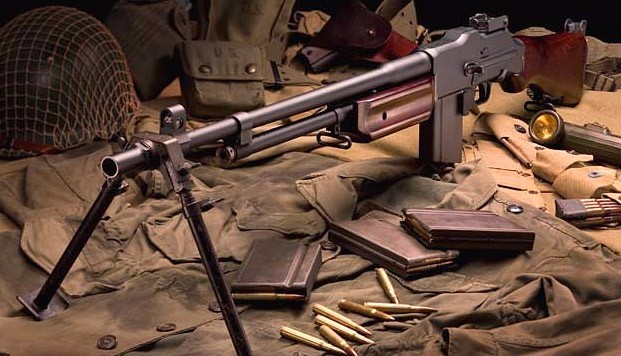
Army adopted a modified BAR known as the “Cal. The Poles also built an experimental 8mm infantry rifle based on the BAR design, which they never placed in production.
BROWNING AUTOMATIC RIFLE MODERN LICENSE
Poland also bought a license to build the BAR in the 1920s, and their army used them in 8mm as the Model 28. In the late 1930s they introduced an improved model with a quick-change barrel as their M37 BAR. The Swedish government also bought a license to build BARs in 1920, and their army adopted it as the M21 in their 6.5mm. 30-06 caliber was used by the Belgian army, and the Egyptian army bought a number in 8mm Mauser caliber. Army never considered necessary or desirable. FN of Belgium built it as their Model 30 and sold them to Belgian, Chilean, Chinese and other armies in limited numbers.Īfter World War II, FN reintroduced their BAR as the improved Model D with a quick-change barrel, something the U.S. In the 1920s, Browning licensed foreign manufacturers to build the BAR. Colt also built a special law enforcement “Monitor” version of the BAR and sold a few of them. The calibers included 6.5mm, 7mm and 8mm Mauser. Neither of these projects continued after the end of WWI.Īt the end of that war, the BAR manufacturing rights reverted to Colt, and they manufactured BARs in the 1920s and 1930s for export military sales. The French also considered adopting it in 30-06 caliber. The Army's WWI combat success of the BAR caused the British to consider adopting it, and they tested a version in their 303 rifle caliber. The BAR 1918A1 is a 1930s improvement with prone-fire enhancement in mind. At that point, Winchester had built 47,123 Marlin-Rockwell, 39,002 and Colt, 16,000. Some 102,125 BARs were built during WWI, and about half of them were delivered after the end of the war. The BAR saw relatively little combat in World War I, but it proved its worth beyond any doubt, so much so that it was one of the very few weapons kept in production after the end of World War I. This mode also kept the weapon from overheating. Short bursts were easily fired by simply pulling and releasing the BAR's trigger quickly. Longer full-automatic bursts were inaccurate and a waste of ammunition. It could be fired in its semi-automatic manner, but it was found to be most effective firing short three- or four-round full-automatic bursts. However, the BAR was a very accurate weapon, particularly when fired from any handy rest. The 18-pound WWI Model 1918 Browning Automatic Rifle fired from an open bolt, and the forward movement of the bolt caused some aim disturbance. In addition, the WWI BAR magazine belt provided a special pocket for the butt of the BAR which was used when firing from the hip in the “assault position.” It was fired from the same prone, sitting, kneeling and standing positions as a regular infantry rifle. Teaching a soldier to use and care for a BAR was not difficult. This organization did not go into use because there weren't enough BARs or BAR men.

At the end of the war, plans were being made to enlarge the BAR platoon so there would be one BAR for each eight-man rifle squad. In combat, one BAR squad was assigned to each rifle platoon.

One of these was converted to a BAR platoon of three squads with two BAR sections each. Army WWI rifle company consisted of four rifle platoons. Machine guns were regimental weapons in World War I, but the BAR became a company weapon.


 0 kommentar(er)
0 kommentar(er)
